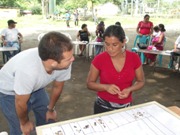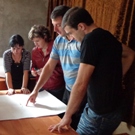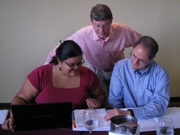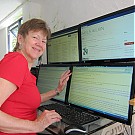Jumpstart Your Next Project: 4 Powerful Steps to Design-Fund
Compilation of the first four steps in project design for improved funding and management.
Earlier this year we looked at the first four steps in designing successful, sustainable, impact oriented projects.
Earlier this year we looked at the first four steps in designing successful, sustainable, impact oriented projects.
Possibly, right now you are beginning a project or program, and a plan for funding it.
For your convenience, I’m providing this compilation of four newsletters detailing these techniques.
You can download my complementary eBook Four Powerful 1st Steps in Designing & Funding Projects where to see full compilation complete with templates that you can edit for your programs.
Or you can click on the red links below to access the individual newsletters that I posted in LinkedIn where you can download the templates that will really speed up your project development process.
The templates that I provide will also guide you in designing projects that will solve the social challenges that your constituents face in a long-lasting and enduring way.
 |
In this newsletter we look at how facilitating a needs assessment with your community can lead to a better understanding of needs, their underlying causes, and can lead to long-term project sustainability.
Different types of organizations will need to conduct needs assessments that range from very simple to highly sophisticated. I include a range of guides where you can select one that would be most appropriate for the level of sophistication needed for your organization.
|
The example in this newsletter is for a very simple needs assessment conducted by a food bank in Southern California. They used a participatory assessment technique called the Ten Seed Technique. They worked with a focus group of people who access the food bank—and who are also representative of the 2,500 people who access the food bank on an annual basis.
| How To Design Your Non Profit Project Using the Results of Your Needs Assessment | |
 |
In this newsletter we look for solution oriented activities for designing programs to solve the problems in the problem tree developed during the needs assessment.
First, we identified potential solution oriented activities. We wrote out a list of the needs and challenges from last week’s assessment with space in between each one. Then we researched solution-oriented activities to each of the underlying causes. Our search uncovered scientific papers, articles, handbooks and manuals.
|
 |
This week’s newsletter is for determining through scientific research if your initial ideas for activities have shown evidence of having worked to solve your community’s needs and challenges. We’re looking for evidence based best practices.
Investigate if there is a scientific basis that your proposed theory and activities have worked on other projects. Suppose that you are a mother whose children are suffering, and an unknown organization came to you with a plan to help your children. Wouldn’t you want that plan to work?
|
| Fast Logframe for Project Funding & Management | |
 |
In this week’s newsletter we’re going to take your problem statement, project outline and goal statement, and place them in a simplified matrix: this the first step in building a logical framework.
This will only take 30 minutes to do but you will be able to see an immediate change in the organization of your project. It will also make your project more presentable to a donor—and much easier to develop management documents like budgets and schedules.
|
In Summary
Facilitating a needs assessment with community members gets right to the underlying causes of the challenges they face—and develops a sense of ownership on their part. For example, at the Church of the Holy Apostles in Manhattan, volunteers serving lunch at their soup kitchen are themselves homeless.
Facilitating a needs assessment with community members gets right to the underlying causes of the challenges they face—and develops a sense of ownership on their part. For example, at the Church of the Holy Apostles in Manhattan, volunteers serving lunch at their soup kitchen are themselves homeless.
Including solution oriented activities that have shown scientific evidence of having worked on similar projects to your project, will give you a greater likelihood of success and sustainability once the project is launched.
This will help you launch one of the 25% of non profit projects that are winners: “rigorous evaluations typically find that around 75% of programs or practices that are intended to help people have little or no effect” according to Ron Haskins, the co-director of the Center on Children and Families at the Brookings Institution. He suggests that this emerging “evidence-based movement separates the wheat from the chaff.” He feels that this “evidence-based initiative has charted a new path that could reduce poverty and increase economic opportunity for the disadvantaged.”
Using my fast log frame template will quickly get you speaking the language that donors speak—and lead you in the direction of developing budgets, schedules, and monitoring and evaluation plans. These in turn increase your chances of receiving donations and successes in managing sustainable, impact oriented projects.
Simply click on the links above to access the individual newsletters that provide more in depth information and to download the project design templates.
Please note:
This week’s exercise is part of the process for developing a project design is for a course I teach called OL 201: Designing and Funding Non Profit Projects. The first two assignments in 201 include detailed instructions for conducting a live needs assessment, finding specific resources that you will need for conducting the assessment, an example of a completed assessment, and a project concept based upon the results. The third assignment leads you through the process of finding evidence based best practices. The fourth assignment provides simple steps to developing a logframe.
Designing & Funding Nonprofit Programs begins every month.
I hope that you enjoyed this. If you have a question don’t hesitate to contact us.
Sincerely,
Tim Magee
Tim Magee is the author of A Field Guide to Community Based Adaptation published by Routledge, Oxford, England.

